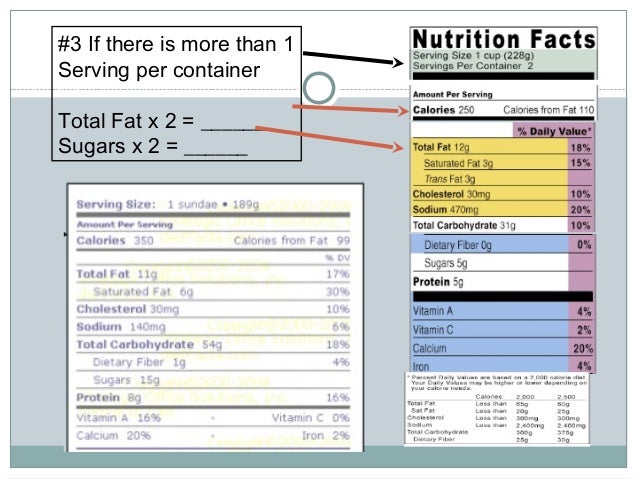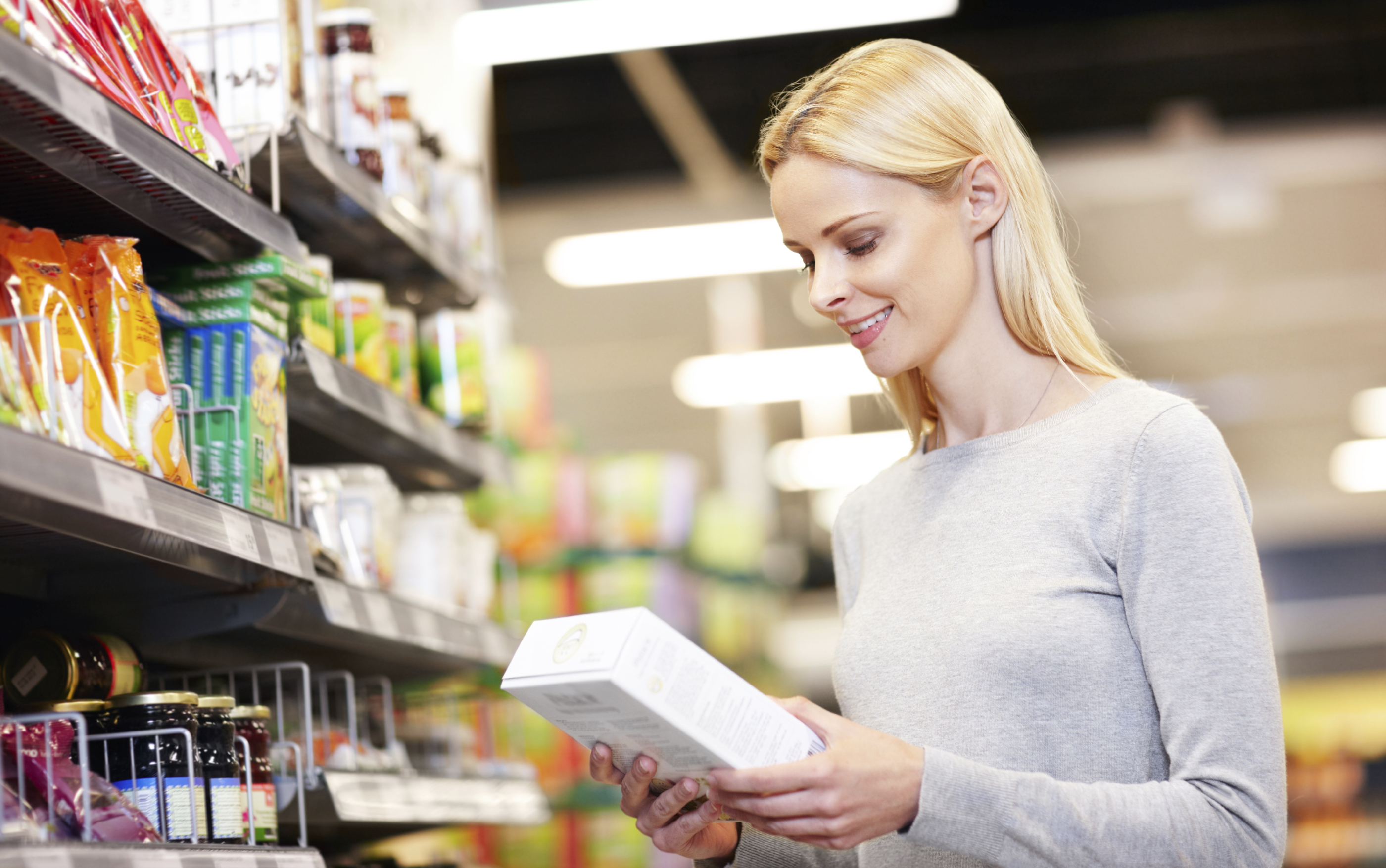43 reading labels on food products
How to understand food labels - Eat For Health The Nutrition Information Panel on a food label offers the simplest and easiest way to choose foods with less saturated fat, salt (sodium), added sugars and kilojoules, and more fibre. It can also be used to decide how large one serve of a food group choice or discretionary food would be and whether it's worth the kilojoules. 13 Misleading Food Label Claims and How Not to Be Tricked Products labeled sugar-free may also have higher levels of fat in order to make up for the taste and texture that is lost when sugar is removed. 2. Label Says "Fruit-Flavored" Reading on a label that a product is fruit-flavored suggests that the product is flavored with real fruit. This, however, is not necessarily the case.
Reading Labels For Clean Eating | The Gracious Pantry Almonds. Walnuts. These are all examples of what clean foods are. Think of it this way. You want to purchase INGREDIENTS. Not prepared foods. Yes, this takes a bit of forethought and planning. Clean eaters do cook a lot, and most of them love it. Just know that over time, the cooking and prep work do become routine.

Reading labels on food products
Why Is Reading Food Labels Important? | livestrong Provides Key Information The nutrition label provides key information such as serving size, calories, total fat, saturated fat, cholesterol, protein, carbohydrate and vitamin content. The label also contains a list of the ingredients. This information helps you stay on track with your daily targets. How to Read a Food Label | Atkins Here's what you should be aware of on a nutrition label: Serving size (if you have more than one serving, be sure to add in the carbs) Total carbohydrates expressed in grams. Amount of dietary fiber expressed in grams (subtract from total number of carbs to get the net carb count) Sugars expressed in grams. Food Labels | CDC All the numbers on this label are for a 2/3-cup serving. This package has 8 servings. If you eat the whole thing, you are eating 8 times the amount of calories, carbs, fat, etc., shown on the label. Total Carbohydrate shows you types of carbs in the food, including sugar and fiber. Choose foods with more fiber, vitamins, and minerals.
Reading labels on food products. Theory of Planned Behavior (TPB) approach: reading intention of food ... Food product labels have a crucial role as they provide the main source of information about the products. The purpose of this study is to analyze the difference and the influence of knowledge ... Food labels - NHS Colour-coded nutritional information tells you at a glance if the food has high, medium or low amounts of fat, saturated fat, sugars and salt: red means high amber means medium green means low In short, the more green on the label, the healthier the choice. How To Read Food Labels - Fit Me Solution The Daily Value for iron is 18 milligrams, so 1 milligram of iron is enough to take notice of: it is more than 5 percent. But because the current Daily Value for calcium on food labels is 1000 milligrams (and the proposed is 1300), 1 milligram of calcium is a negligible amount. How to Understand and Use the Nutrition Facts Label | FDA For certain products that are larger than a single serving but that could be consumed in one sitting or multiple sittings, manufacturers will have to provide "dual column" labels to indicate the...
› sites › defaulthow to understand food labels - Eat For Health Instead learn a few simple label reading tips to choose healthy foods and drinks, for yourself. You can also use the label to help you lose weight by limiting foods that are high in energy per serve. 100g Column and Serving Size If comparing nutrients in similar food products use the per 100g column. Food Labeling & Nutrition | FDA Food labeling is required for most prepared foods, such as breads, cereals, canned and frozen foods, snacks, desserts, drinks, etc. Nutrition labeling for raw produce (fruits and vegetables) and... How To Read Food Labels - 10 Tips | Pritikin Program For Eating Right A serving of oil spray, for instance, is .25 grams. That's about 120th of an ounce - far less than most people could, or would, spray on a pan with even just one squirt. 4. Check the amount of servings per package. Decades ago, many products were in fact single servings. A bottle of cola was one serving. One small candy bar was one serving. How To Read Food labels for Sugar | My Sugar Free Kitchen 1 teaspoon of sugar is approximately 4 grams The World Health Organisation recommends no more than 10% of your daily food intake (ie: calories) should be made up of added sugars. What does this look like in real terms? For a 2,000-calorie diet, 10% would be 50 grams, or 12.5 teaspoons of added sugar per day. How to calculate 10% of Daily Calories
The Importance of Reading the Food Label and Nutritional Facts The Importance of Reading Food Labels This information does two things: The Basics of Reading a Nutrition Label 1. Serving Size 2. Calories per Serving 3. Percent Daily Values 4. Nutrient Contents 5. Vitamins & Minerals 6. Ingredient List Putting it All Together Reading food labels makes a big difference when it comes to your family's health. food-guide.canada.ca › using-food-labelsUse food labels - Canada's Food Guide Oct 14, 2020 · Using food labels can help you compare and choose products so you can make an informed choice. On this page Benefits of using food labels Changes to food labels How to use food labels Benefits of using food labels Food labels provide information you can use to make informed choices about foods and drinks at the grocery store and at home. Food labels can help you: Reading food labels: Tips if you have diabetes - Mayo Clinic Reading food labels can help you make the best choices. Start with the list of ingredients When you're looking at food labels, start with the list of ingredients. Keep an eye out for heart-healthy ingredients, especially those that are less processed, such as whole-wheat flour, soy and oats. Food Label Reading - What You Need to Know - Drugs.com Calories per Gram: Many labels tell you how many calories are in each gram of the major parts of food. Fats contain 9 calories per gram, carbohydrates contain 4, and proteins contain 4. High fat foods can lead to weight gain because fats have more than twice the calories of other types of food.
Food Labels | CDC All the numbers on this label are for a 2/3-cup serving. This package has 8 servings. If you eat the whole thing, you are eating 8 times the amount of calories, carbs, fat, etc., shown on the label. Total Carbohydrate shows you types of carbs in the food, including sugar and fiber. Choose foods with more fiber, vitamins, and minerals.
How to Read a Food Label | Atkins Here's what you should be aware of on a nutrition label: Serving size (if you have more than one serving, be sure to add in the carbs) Total carbohydrates expressed in grams. Amount of dietary fiber expressed in grams (subtract from total number of carbs to get the net carb count) Sugars expressed in grams.
Why Is Reading Food Labels Important? | livestrong Provides Key Information The nutrition label provides key information such as serving size, calories, total fat, saturated fat, cholesterol, protein, carbohydrate and vitamin content. The label also contains a list of the ingredients. This information helps you stay on track with your daily targets.

















Post a Comment for "43 reading labels on food products"